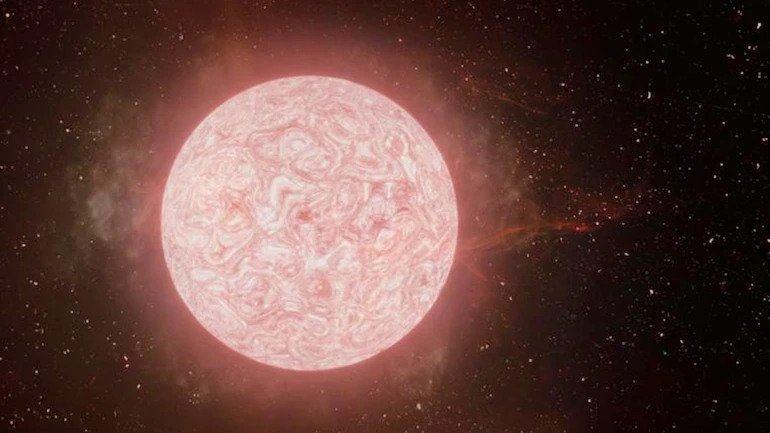
In a first, scientists document final days of a supergiant star

Scientists now know what a dying star goes through during the final days of its existence.
Astronomers studied a red supergiant in the last four months leading up to its explosion to form a supernova. They now have documented real-time images showing the rapid end of a star, said to be 10 times the size of the sun.
The behaviour of massive stars in their final years of evolution is almost entirely unconstrained. The study, conducted by researchers from Northwestern University and the University of California, Berkeley, observed the red supergiant star in its final year before exploding.
The rapid changes observed in the red supergiant star, located in the NGC 5731 galaxy about 120 million light-years away from Earth, makes it evident that at least some of them must undergo significant changes in their internal structure before supernova, states the study published in The Astrophysical Journal.
A supernova is what happens to a massive star at the end of its life. Such cataclysmic explosions are known to send shock waves of compressed gas clouds far into the cosmos that eventually give birth to new stars.
Also read: How the Even Horizon Telescope is shining light on black holes
The star was first seen in 2020 by the University of Hawaii Institute for Astronomy Pan-STARRS on Haleakal, Maui. Illumination caused due to huge amount of light radiating from the energetic explosion of the supergiant, named SN 2020tlf, caught the scientists’ attention. The astronomers captured the powerful flash in the cameras, witnessing the very first spectrum of the energetic explosion.
The WM Keck Observatory’s Low-Resolution Imaging Spectrometer found direct evidence of dense circumstellar material surrounding the star at the time of the explosion. That stage in the evolution of such stars was unheard of till date. It’s the first direct detection of a red supergiant star’s “dying breath”—a pre-explosion brightening—before an ordinary (Type II) supernova.
Wynn Jacobson-Galán, the lead author of the study, said, “This is a breakthrough in our understanding of what massive stars do moments before they die. Direct detection of pre-supernova activity in a red supergiant star has never been observed before in an ordinary type II supernova. For the first time, we watched a red supergiant star explode.”
The most unique part of the whole exercise was watching the process of a massive star transitioning into a supernova explosion. “It’s like watching a ticking time bomb,” said senior author Raffaella Margutti, an associate professor of astronomy at UC Berkeley. “We’ve never confirmed such violent activity in a dying red supergiant star where we see it produce such a luminous emission, then collapse and combust, until now.”
Scientists are now excited about locating more such red supergiants and observe their luminous radiation, which could help solve several mysteries about what happens to stars in their final moments.


